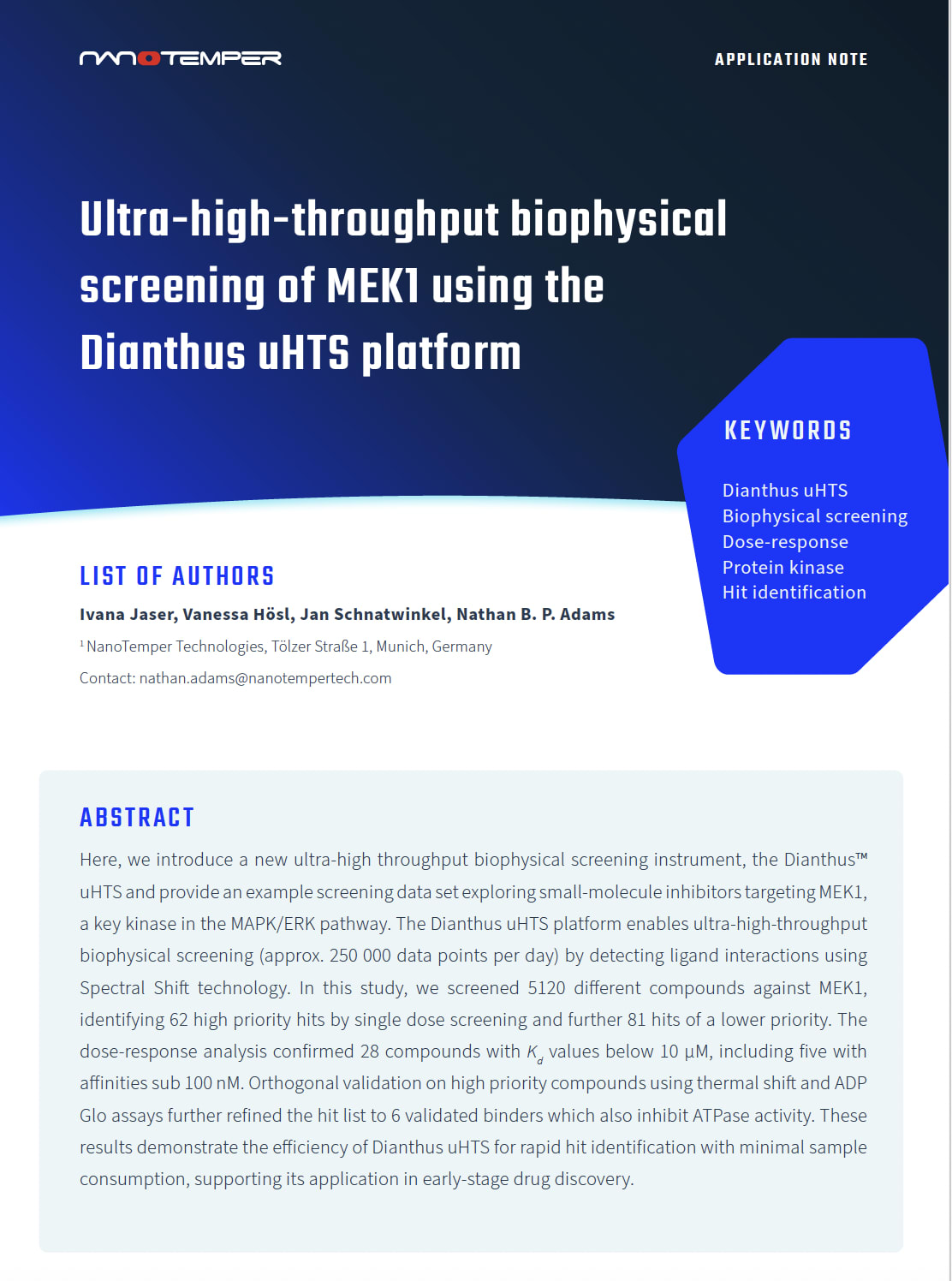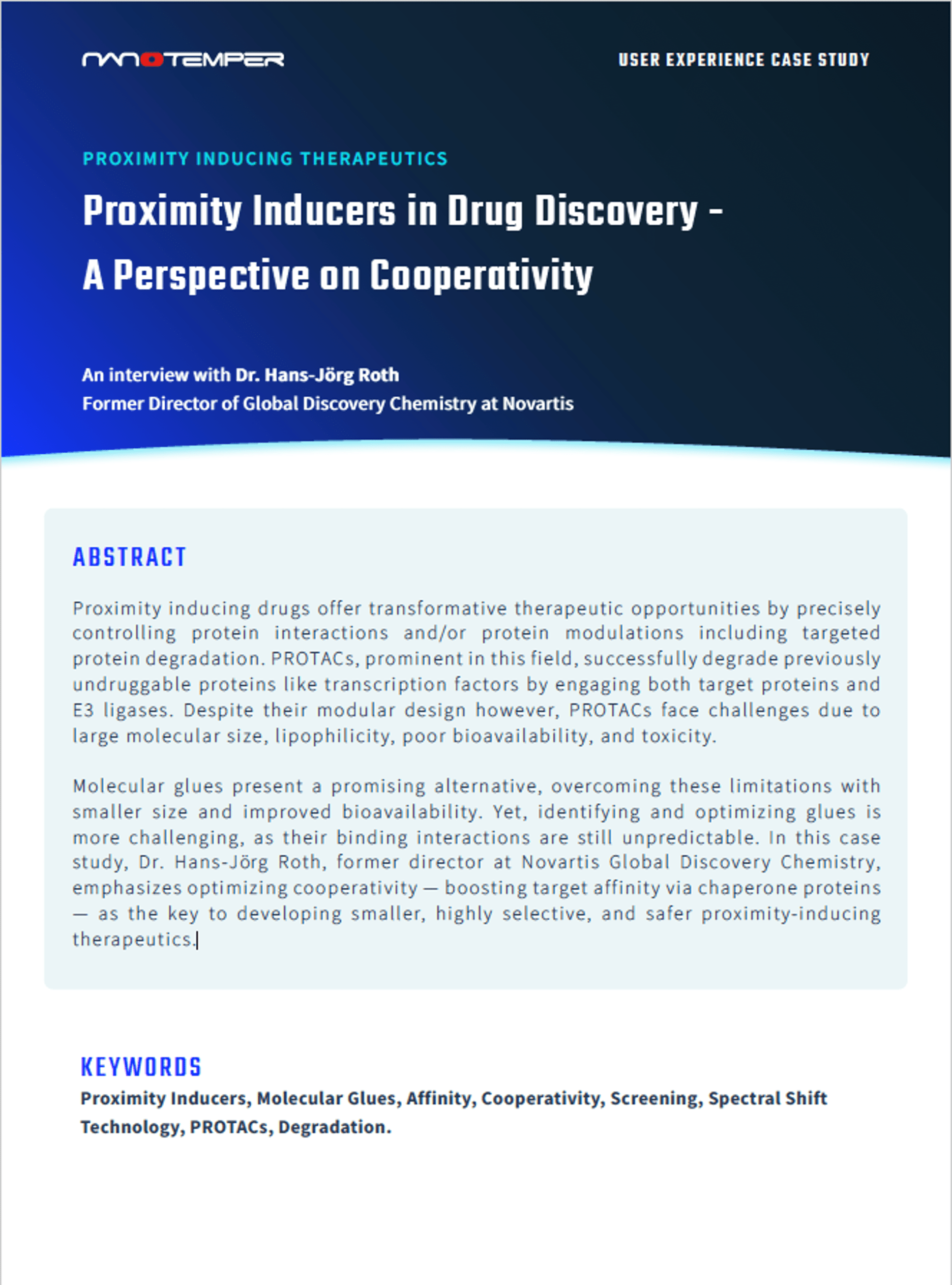
Targeted Protein Degradation (TPD), a relatively new therapeutic approach, is making waves by targeting otherwise ‘undruggable’ proteins. PROTACs are the best-understood protein degraders, with multiple PROTAC candidates in clinical trials.
If you’re new to the world of TPD or you’re trying to keep up with all developments in this fast-moving field, here are some terms and definitions that will help you:
PROTAC
A PROteolysis TArgeting Chimera is made up of three modules: a ligand that recruits an E3 ligase, a ligand or warhead that binds the POI, and a linker. Rather than inhibiting the function of the POI, the modules work together to target it for degradation using the cell’s own waste disposal machinery.
Bifunctional and heterobifunctional
A key feature of PROTACs is that they are bifunctional. They have two separate binding domains that can simultaneously bind two molecules – a POI and an E3 ligase. Since these are two different types of molecules, the PROTAC is heterobifunctional.
Linker
The module or component in a PROTAC molecule that connects the E3 ligase ligand (anchor) and the POI ligand or warhead. More than just a connector, the length and composition, and the attachment point of the linker strongly influence the properties and bioactivity of the PROTAC. For example, the linker composition can impart or shift selectivity of the PROTAC against different isoforms of a particular POI and can influence the stability of the ternary complex. There is no one-size-fits-all linker, meaning it needs to be tested and optimized for each PROTAC.
Ubiquitin-Proteasome System (UPS)
Cellular machinery that specifically detects and degrades polyubiquitinated target proteins through a highly regulated process mediated by the sequential action of three types of enzymes – ubiquitin-activating enzymes (E1), ubiquitin-conjugating enzymes (E2), and ubiquitin ligases (E3).
E3 Ligase
An enzyme in the UPS that facilitates the transfer of ubiquitin from an E2 ubiquitin-conjugating enzyme to a specific POI. The resulting ubiquitinated target is proteolytically degraded by the proteasome.
Induced proximity
A PROTAC brings the target protein and E3 ligase together by binding to both of them, forming a ternary complex. Their close proximity, induced by the PROTAC, enables novel protein-protein interactions between target and ligase, an interaction that would not otherwise have occurred.
Ternary or trimeric complex
After the PROTAC forms a binary complex with the POI (or E3 ligase), they bind the E3 ligase (or POI), forming a ternary or trimeric (1:1:1) complex. This ternary complex brings together the POI and E3 ligase, which triggers the ubiquitination of the POI.
Sub-stoichiometric
Since the PROTAC functions catalytically by bringing target and ligase together, once the ubiquitination reaction is complete, it can release and form a new ternary complex with the next molecules of target and ligase. Therefore the PROTAC can be present and effective at a lower, or sub-stoichiometric concentration relative to both target protein and E3 ligase.
Occupancy-driven pharmacology
This is the process small molecule inhibitors use to block target proteins – they do so by binding and inhibiting their function. With this approach, high therapeutic efficacy requires high local concentration of an inhibitor that binds the POI with high affinity and it needs to remain bound for a long duration. And with this comes risks of off-target binding and side effects.
Event-driven pharmacology
This is the process by which PROTACs operate. They modulate target protein function by induction of degradation. Potent inhibition can be achieved with weaker binary interactions with a POI if a stable ternary complex can form. This interaction need not be long-lived and in fact, transient interaction allows the PROTAC to mark multiple molecules of POI for degradation using this catalytic mechanism. As a result, PROTACs can be especially effective against a POI that is overexpressed. This also provides an opportunity to repurpose inhibitor compounds that were promising but ultimately failed due to an inability to achieve or maintain sufficient local concentrations.
With a better understanding of the vocabulary and concepts of PROTACs and TPD, the power of this approach becomes more clear. There is still much to be done, including understanding the opportunities and limits in PROTAC design, and the development of methods to identify and target new E3 ligases and their ligands, which are all needed to create better therapeutics for challenging targets.
To learn more about PROTACs and how to design effective protein degraders, visit NanoTemper’s PROTACs resource center.








